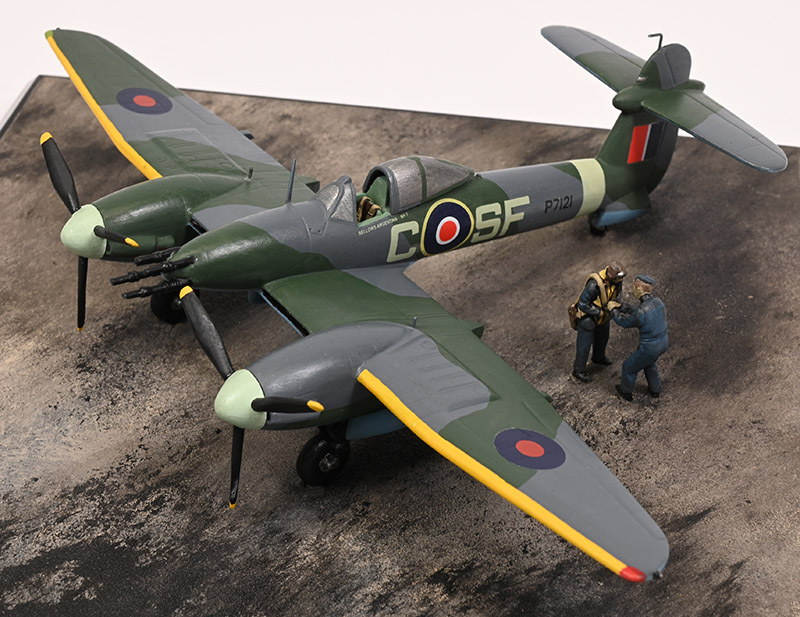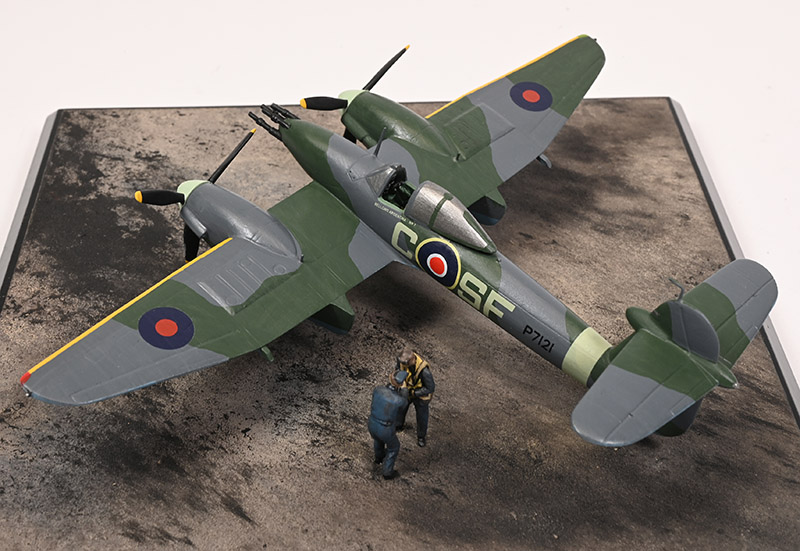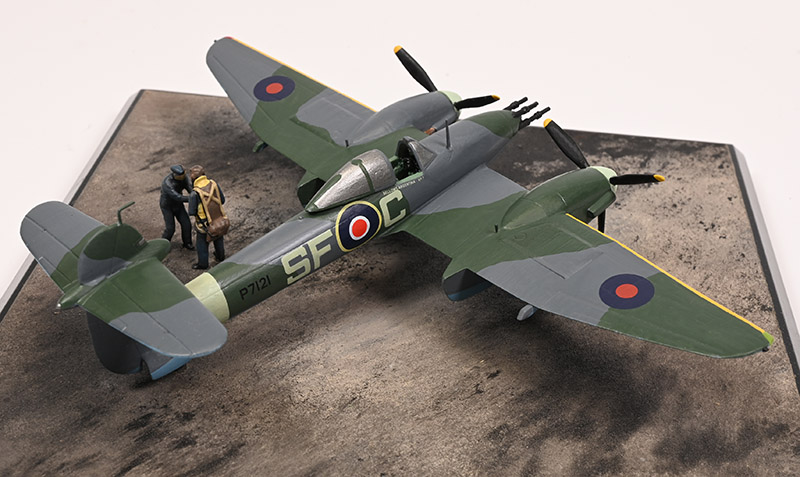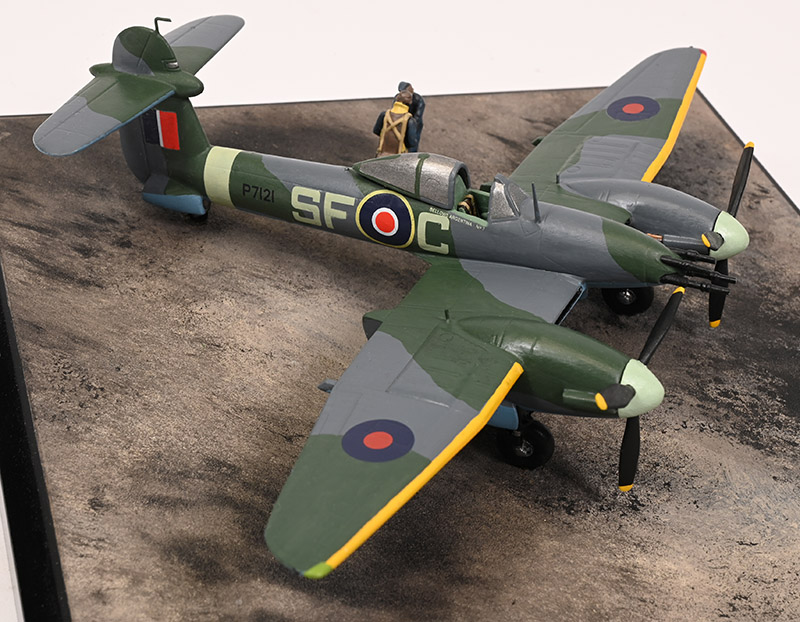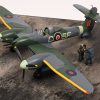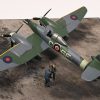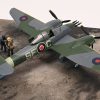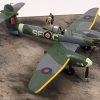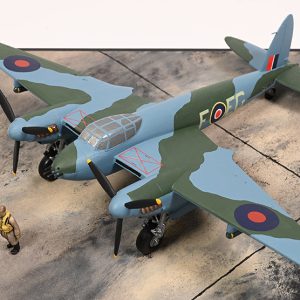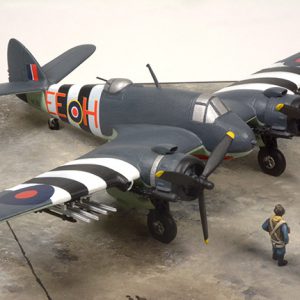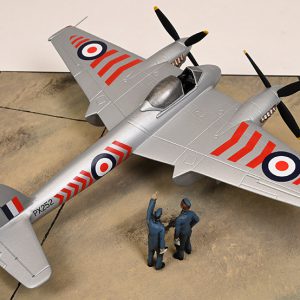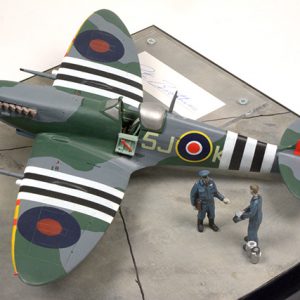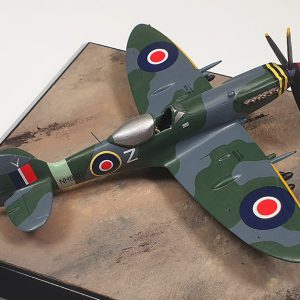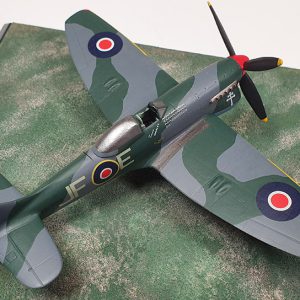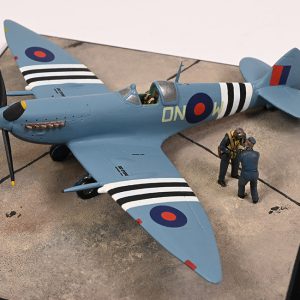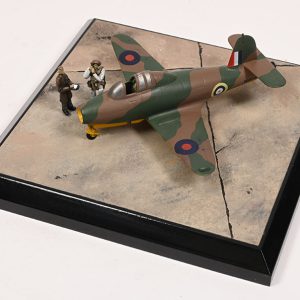Westland Whirlwind Mk I, P7121, SF-C, “BELLOWS ARGENTINA NO 7”
137 Squadron, Pilot Officer Dattatreya Samant, Manston, Spring 1942.
The Westland P.9 Whirlwind was a response to Air Ministry Specification F.37/35 that called for a day and night fighter with four 20 mm cannons and an all-round view for the pilot. The Whirlwind was the only submission selected for construction, and as well as being the RAF’s first cannon-armed fighter it was its first twin-engined fighter to enter service. The selection of Westland, a company with no history of fighter design and production, was something of a surprise to its competitors, but the Air Ministry considered that with many of the other companies already engaged in preparations for war, Westland had the capacity in both design and production. The design, under the supervision of W. E. W. Petter, was considered radical although some of its innovations, such as the routing of the engine exhausts through the nacelles in an effort to minimise drag were to course problems in development. The engines were based on the Rolls-Royce Kestrel K.26 with certain Merlin features, and were later renamed Peregrine.
The original design had twin fins at the end of a tailplane set on top of the rear fuselage, but wind tunnel tests showed that when the flaps were lowered the tailplane lost its effectiveness. The design was altered to a tall single fin with high level horizontal stabilisers, a layout which became a prime recognition feature It was in this configuration that the prototype made its first flight from Boscombe Down on 11th October 1938, with Harald Penrose at the controls. Testing at RAE Farnborough and at Yeovil showed the need for over 250 modifications, particularly evident being the “bullet ” fairing at the fin/tailplane junction to obviate buffeting. The first production aircraft P6966 made its maiden flight on 22nd May 1940.
In 1941, P6997 had undertaken trials at Boscombe Down carrying a 500 lb bomb under each wing, and in September 1942 this capability was added to both 137 and 263 Squadrons’ aircraft. Sometimes nicknamed “Whirlibombers” their main role was now attacking targets of opportunity across the Channel, the raids being known as Rhubarbs. 137 Squadron re-equipped with Hurricane IVs in July 1943, but 263 Squadron continued flying the Westland Whirlwind Mk I until the end of the year, when they received the Typhoon Mk IB. The RAF’s ground attack tactics later in the war were presaged by the Whirlwind operations of 1941 – 1943.
Despite the Whirlwind’s promise, production ended in January 1942, after the completion of just 112 aircraft (plus the two prototypes). Rolls-Royce needed to concentrate on the development and production of the Merlin and Vulture engines, rather than the Peregrine. Westland was aware that its design, which had been built around the Peregrine engine, was incapable of using anything larger without an extensive redesign. A further consideration was that building a Whirlwind consumed three times as much alloy as a Spitfire.
The name and concept of Fellowship of the Bellows probably started in Argentina in October 1940, when a group of young British and Anglo-Argentines from Buenos Aires founded the organisation. In 1940 a Spitfire or a Hurricane cost about £5,000 and in November of that year more than £2,500 has already been raised. Similarly in Brazil some British citizens looked for a way to help the British war effort. An initial “Spitfire Fund” was started, and donations bought Spitfires for the RAF. The total number of Fellows was estimated at over 200,000 persons, including 56,000 in Argentina and 35,000 in Uruguay. Every time an enemy aircraft was shot down by the RAF each member of the club contributed one cent. Whirlwind P7121 was the 7th Bellows plane and as such was marked “BELLOWS ARGENTINA No 7”.
In several wartime photos, Pilot Officer Dattatreya Samant who flew P7121 with 137 squadron is seen standing by his aircraft. P7121 was posted to 137 Squadron on 6th February 1942, just prior to the squadron’s drubbing by the Luftwaffe’s fighter screen around the Scharnhorst, Gneisenau and Prinz Eugen during Operation Cerberus. The aircraft wears the RAF’s mid-war day fighter scheme of Ocean Grey, Dark Green A scheme with lighter medium sea grey under surfaces. After 14 months in action, P7121 crashed during dive-bombing practice over RAF Manston.


